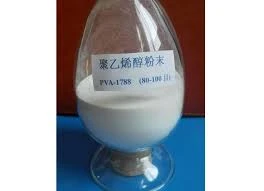The Role of HPMC in Detergent Formulation
Hydroxypropyl Methylcellulose (HPMC) has become an essential ingredient in the formulation of various cleaning products, including detergents. As a cellulose derivative, HPMC is valued for its multifunctional properties that enhance the performance, stability, and texture of detergents. This article will delve into the significance of HPMC in detergent formulations, its various functionalities, and the benefits it delivers in everyday cleaning applications.
What is HPMC?
HPMC is a semi-synthetic polymer derived from cellulose, a naturally occurring polymer found in plant cell walls. Its structure consists of hydroxypropyl and methyl groups attached to the cellulose backbone, affecting its solubility and viscosity properties. HPMC is particularly known for its ability to form gels and act as a thickening agent, making it an ideal choice in industries ranging from pharmaceuticals to personal care and cleaning.
Functions of HPMC in Detergents
In detergent formulations, HPMC serves multiple purposes
1. Thickening Agent One of the primary roles of HPMC is as a thickening agent. It increases the viscosity of the detergent, which can enhance the product's overall stability. A thicker formulation can also reduce dripping and improve the user experience, leading to better application control and less mess during use.
2. Stabilizer HPMC acts as a stabilizer in liquid detergents, preventing phase separation and maintaining the uniformity of the product. This is crucial for ensuring that the detergent performs consistently over its shelf life. Stable formulations are essential for consumer satisfaction, as they deliver reliable cleaning performance.
3. Film-forming Agent HPMC can create a thin film on surfaces, enhancing the cleaning performance of the detergent. The film helps to lift dirt and grime effectively, allowing for better penetration and removal of stains from fabrics and surfaces. This property is particularly beneficial when formulating detergents for clothing and dishwashing applications.
hpmc for detergent

4. Suspending Agent In powders and gel-type detergents, HPMC can help suspend other ingredients, such as abrasive agents or fragrances, ensuring they remain evenly distributed throughout the product. This feature is particularly advantageous in multi-component formulations where ingredient interaction could lead to clumping or settling.
Benefits of HPMC in Detergents
The inclusion of HPMC in detergent formulations offers numerous benefits that can greatly enhance product efficacy
- Improved Cleaning Efficiency By promoting better adhesion of the detergent to soils and stains, HPMC contributes to overall cleaning efficiency. This results in better stain removal and a fresher appearance of cleaned items.
- Environmental Safety HPMC is biodegradable and derived from renewable resources, making it an environmentally friendly option in detergent formulations. As consumers increasingly seek sustainable options, detergents containing HPMC align with eco-friendly practices.
- User Convenience The improved texture and stability provided by HPMC mean that consumers can enjoy easy handling and application of detergents without fearing spills or mess. In liquid formulations, this translates to better dosing control, which can lead to resource savings.
- Versatility HPMC is compatible with various surfactants, enzymes, and other common detergent components, allowing for flexibility in formulation. This versatility helps manufacturers develop tailored products that meet specific cleaning needs.
Conclusion
The integration of HPMC in detergent formulations showcases its multifunctional properties that benefit both manufacturers and consumers alike. From enhancing viscosity and stability to promoting effective cleaning and user convenience, HPMC plays a pivotal role in the development of high-quality detergents. As the demand for effective and environmentally safe cleaning products continues to rise, the relevance of HPMC in this sector is likely to grow, paving the way for innovations in detergent formulation. By understanding and harnessing the unique qualities of HPMC, manufacturers can create products that not only perform well but also align with modern sustainability goals, meeting the evolving needs of consumers worldwide.
-
The Application and Significance of Construction RdpNewsMay.19,2025
-
Industrial Grade HpmcNewsMay.19,2025
-
Building Coating Adhesive Building Coating Adhesive HpmcNewsMay.19,2025
-
Application Of Hpmc For Detergent For Detergent In DetergentsNewsMay.19,2025
-
Application Of Hpmc Cellulose In Cement-Based MaterialsNewsMay.19,2025
-
Application Of High Quality Hpmc For Construction In The Field Of ConstructionNewsMay.19,2025




